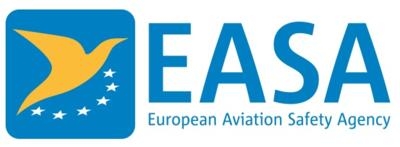Sat, Jun 25, 2016
GAMA Welcomes The Measure That Is Similar To U.S. Part 23 NPRM
EASA has issued a Notice of Proposed Amendment (NPA) on the CS-23 rulemaking for the light end of the general aviation market. The proposed rule will make it easier for the general aviation community in Europe to design, develop, and deploy safety-enhancing technologies and products for the current fleet as well as future small aeroplanes.

EASA’s draft rule is closely coordinated with the U.S. FAA’s Notice of Proposed Rulemaking (NRPM) for Part 23 aircraft, which was issued in March. The two agency proposals both remove current overly prescriptive design requirements and replace them with performance-based airworthiness standards, while also recognizing the use of consensus-based standards to establish acceptable methods of compliance for specific designs and technologies. In its NPA, EASA noted its high-level coordination with the FAA on this issue, as well as its work with the aviation community in developing consensus-based standards.
EASA’s CS-23 draft rule goes slightly further than the FAA’s Part 23 proposal in areas such as allowing more proportional requirements for loss-of-control, for example, which seems to benefit from the general aviation community's comments to the FAA’s docket and EASA’s Advance Notice of Proposed Amendment. EASA will accept comments on the proposal until September 23, and plans to publish its rule by the end of the year. It is hoped that the FAA will also include revisions based on the community’s comments when it issues its final Part 23 rule.
“GAMA is pleased to see EASA moving forward with its proposed rule on CS-23 and particularly its announcement that it will finalize the CS-23 rewrite by the end of 2016,” GAMA President and CEO Pete Bunce said. “EASA’s draft rule and its harmonization with the FAA’s Part 23 proposal reflects the positive outcomes that can occur when regulatory agencies around the world work together and partner with industry to develop smart, common-sense solutions that allow general aviation manufacturers to innovate as they continue to improve the safety of aircraft. We hope that the FAA will announce its final Part 23 rule soon to ensure global harmonization on this very important issue.”
(Source: GAMA news release)
More News
Light Gun A handheld directional light signaling device which emits a brilliant narrow beam of white, green, or red light as selected by the tower controller. The color and type of>[...]
"The journey to this achievement started nearly a decade ago when a freshly commissioned Gentry, driven by a fascination with new technologies and a desire to contribute significan>[...]
Aero Linx: JAARS, Inc. For decades now, we’ve landed planes on narrow rivers and towering mountains. We’ve outfitted boats and vehicles to reach villages that rarely se>[...]
"Our driven and innovative team of military and civilian Airmen delivers combat power daily, ensuring our nation is ready today and tomorrow." Source: General Duke Richardson, AFMC>[...]
Aircraft Conflict Predicted conflict, within EDST of two aircraft, or between aircraft and airspace. A Red alert is used for conflicts when the predicted minimum separation is 5 na>[...]
 ANN's Daily Aero-Term (04.20.24): Light Gun
ANN's Daily Aero-Term (04.20.24): Light Gun Aero-News: Quote of the Day (04.20.24)
Aero-News: Quote of the Day (04.20.24) ANN's Daily Aero-Linx (04.21.24)
ANN's Daily Aero-Linx (04.21.24) Aero-News: Quote of the Day (04.21.24)
Aero-News: Quote of the Day (04.21.24) ANN's Daily Aero-Term (04.21.24): Aircraft Conflict
ANN's Daily Aero-Term (04.21.24): Aircraft Conflict



